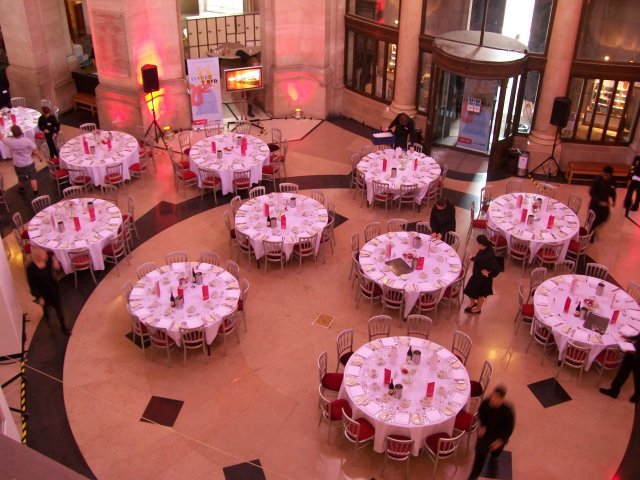The play of forces by which we are made, each with and from our compromised perspectives, to understand and evaluate one another, leads us down a sort of evolutionary path, a perceptual survival-of-the-fittest, the attention span whose basis is “interest level”.
The curators, waiting for the flood of material into their eyes, assume incorporation is like the process by which olives get strained out into consituent sizes through holes of various dimensions, by which retention (judgment) is nearly a physical process. The artists making presentations talk and fill ears as if with grain, or liquid with its sedimentary inherence, and the know-holes of the curators like drains inward with complex-invisible filter systems, filters on filters, reflection pools, sustain the onslaught with measured and measuring patience—because all await the backflow of the fed sponge. Level of interest is of course subjective. But on the other hand subjective is level of interest, and incorporation is a sequence of confirmations of one’s own body and its conditions as opposed to a mechanism of reception and judgment, of properties. The judgment of the curator is the expression of what the identity of the role specifies, underscoring what is expected of them as the chooser, facilitator, permitter, conditioned as it is by affinities, favours, preferences, distribution.
That’s the initial self-reflection that only the dullest, most opaque-minded and overconfident free-agent will not have realized.
But soon such rebellious thoughts encounter the cunning evolution of self-awareness, and interests become the very substance of judgment, strategy the façade rather than the deviant underground current. Expectation and insinuation become a flirtatious game, and one simply has to know or figure out how to bend the rules; one can ask or refrain from asking, one can assume or make-believe to assume; for instance what one’s role is, what is expected, on one’s enthusiasm or real powers of potentiality. (Hard to measure! Evidence is gathered from all adjacent areas, like how when looking at a particular star directly, its energy melts into the black depth beyond, but when the center of perception is elsewhere it presents itself.) And then the possibility opens to take positions.
While being driven in a taxi-cab our group had a discussion about the previous day’s artist presentations. I had remarked that I had asked one of the artists after retiring to the bar why he thought these presentations were happening in this way; he confided that there may be some insinuation, perhaps of reciprocation. (The context is important: a political situation caused by a “provinical” setting for a large international art prize that has little direct effect on local artists, fostering alienation; as for us, those hosted and being introduced to the local, the insinuation is to host in return.) It seemed that when uttered, this insinuation was vile and offensive even, not deeply but a feeling rather more related to the resentment one feels after waking from a dream in which one was totally free. Defiant, another person in the car said that they hadn’t seen anything worth circulating anyhow, and this was partly because the artists are lazy and state-supported in this “regional” location, and are stuck in a cycle of applications, residencies and justifications. The inability of the artists presenting to provide any information or insight with regard to their marketability was referred to as a flaw, in light of the self-fulfilling government system. This time the insinuation was that if one didn’t pursue a healthy relationship with the market then one wasn’t pursuing independence. And naturally without independent thought there is no need to circulate. In a way, this makes sense, and if you accept this logic then our presence there made sense. There was a recurrent mention made by artists, curators and the non-profits we met of developing the market in this country. The market deterritorializes, apparently opening up rifts in space in ways the state has no flexibility for. There is still the question of why the market’s tendencies engender independence, and how such independence is perceived. Curators and their assistants turn to galleries as the first place to find comprehensive materials on artists, as well as production and technical details, making the job of selection a lot easier; in conventional terms this relation can be quite close. It hardly need be pointed out that this can set up a self-fulfilling system in its own right, especially if the equation that conformity to the commercial market will lead to greater independence is followed, necessitating all kinds of measures and attitude shifts. Whether or not this comprises an interesting discussion is another question. Some will then leap to identify an insight in the midst of compromise, as the most independent artist must defer to certain tastes and conventions, and their critic or anyone else will have to embrace their own fallen-from-grace position, and to fit their criticisms among the advertisement and sustainable salesmanship of reality—the skill by which they achieve this puzzling mixture of independence and deferral will be identified as what anyone is being judged for; all the rest is information, we will hear some say.
(originally posted on the Vitamin Creative Space blog, 29/05/2010)
